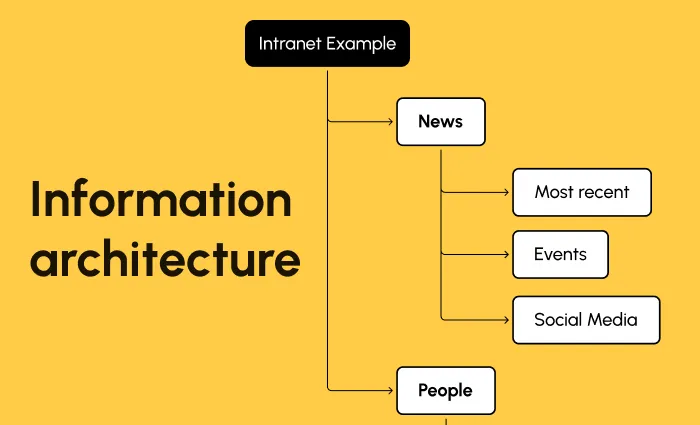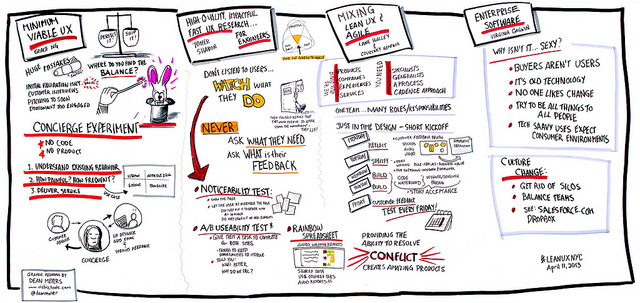In the vast landscape of digital design, Information Architecture (IA) stands as a cornerstone of creating intuitive and user-friendly experiences. Whether it’s organizing websites’ content, designing navigation systems, or creating labeling schemes, IA ensures that users can easily find and understand the information they need. Let’s explore the essence, goals, principles, benefits, and pitfalls of Information Architecture.
Defining Information Architecture
At its core, Information Architecture is the art and science of organizing and labeling information in a way that supports usability and findability. It involves:
- Organizing content logically to meet user needs and goals.
- Labeling systems to categorize and present information consistently.
- Navigation design to help users seamlessly explore and interact with content.
IA plays a critical role in the development of websites, applications, and other digital environments. Without it, even the most visually appealing designs can fall short of delivering a satisfying user experience.
The Process of Building an Information Architecture
Building a robust IA typically involves these steps:
- Identify user needs and business goals: Understanding what users are looking for and the tasks they aim to complete is fundamental.
- Develop a content strategy: This defines the types of content to be included, their organization, and how they’re labeled.
- Create a logical structure: Establish a hierarchy for content and define relationships between different pieces of information.
- Design navigation systems: These systems enable users to access the right information effortlessly.
- Implement labeling systems: Taxonomies and controlled vocabularies ensure consistency and clarity.
- Evaluate and test: Testing the IA ensures it meets user needs effectively and aligns with business goals.
The Goals of Information Architecture
The ultimate aim of IA is to craft user-friendly and intuitive information environments. Specific objectives include:
- Facilitating quick information discovery: Users should find the information they need without navigating through unnecessary complexity.
- Creating a clear structure: Logical hierarchies and relationships help users understand how information is interconnected.
- Supporting diverse users and tasks: Effective IA accommodates both novice and expert users, tailoring experiences to different needs.
- Improving information management: By providing a clear organizational framework, IA makes it easier for businesses to handle their content efficiently.
The Benefits of a Good Information Architecture
A well-designed IA offers a multitude of advantages for both users and organizations:
- Improved User Experience: By simplifying navigation and improving content organization, IA helps users achieve their goals more effectively, boosting satisfaction and loyalty.
- Increased Efficiency: Easy-to-navigate structures reduce time spent searching for information, benefiting both users and internal teams managing the content.
- Enhanced Credibility and Trust: Consistent labeling and navigation foster trust, making users more confident in the information they encounter.
- Better SEO Performance: Search engines reward well-organized content, improving visibility and rankings.
- Scalability and Adaptability: A flexible IA ensures that digital environments can grow and evolve without losing their usability.
Key Principles of Information Architecture
To create an effective IA, designers adhere to several guiding principles:
- User-Centered Design: Prioritize user needs and tasks by thoroughly researching behaviors and goals.
- Consistency: Use uniform labeling and navigation to create a cohesive experience.
- Flexibility: Ensure the design adapts to different devices, users, and contexts.
- Functionality and Aesthetics: Balance visual appeal with practical usability.
- Accessibility and Inclusivity: Design for users with varying abilities to create an environment that’s usable by all.
These principles are foundational to creating digital spaces that not only function well but also delight users.
Common Mistakes in Information Architecture
Despite its importance, many projects falter due to common IA missteps:
- Neglecting user needs: Ignoring user research can lead to designs that fail to meet expectations.
- Inconsistent structure: A lack of uniformity in navigation and labeling confuses users.
- Overcomplicating designs: Cluttered environments with excessive information overwhelm rather than assist.
- Skipping testing: Without thorough evaluation, flaws in IA can persist post-launch.
- Ignoring maintenance: Failing to update IA leads to outdated and ineffective systems.
Recognizing and addressing these pitfalls early can prevent costly redesigns and ensure long-term success.
Information Architecture in Action
Consider these real-world examples where IA made a significant impact:
- E-commerce Websites: Platforms like Amazon prioritize clear categorization and intuitive search functionalities, ensuring users can quickly locate products.
- Educational Platforms: Coursera and Khan Academy organize courses into well-defined categories and provide multiple navigation options, catering to diverse user needs.
- Healthcare Portals: Sites like Mayo Clinic structure vast amounts of medical information into user-friendly interfaces, allowing easy access to trustworthy content.
In each case, effective IA contributes to a seamless and productive user experience.
Why Information Architecture Matters
In today’s digital-first world, where attention spans are short and user expectations are high, IA is more critical than ever. It bridges the gap between content creators and end users, ensuring that information is not only accessible but also meaningful. Organizations that invest in IA benefit from improved user engagement, stronger brand loyalty, and a competitive edge in their industries.
Final Thoughts
Information Architecture is much more than a technical discipline; it’s a thoughtful approach to creating digital environments that serve both users and organizations. By adhering to its principles, avoiding common mistakes, and continually evolving, designers and businesses can craft experiences that truly resonate.
For further reading, explore these resources:
- The Information Architecture Institute
- Usability.gov’s Guide to IA
- Smashing Magazine: IA Basics
- Nielsen Norman Group: IA Insights
With the right IA, your digital product can become a model of efficiency, usability, and delight. Start crafting thoughtful architectures today, and watch your user satisfaction soar.
Image belongs to: Information architecture: how to make it worth your time & money.


